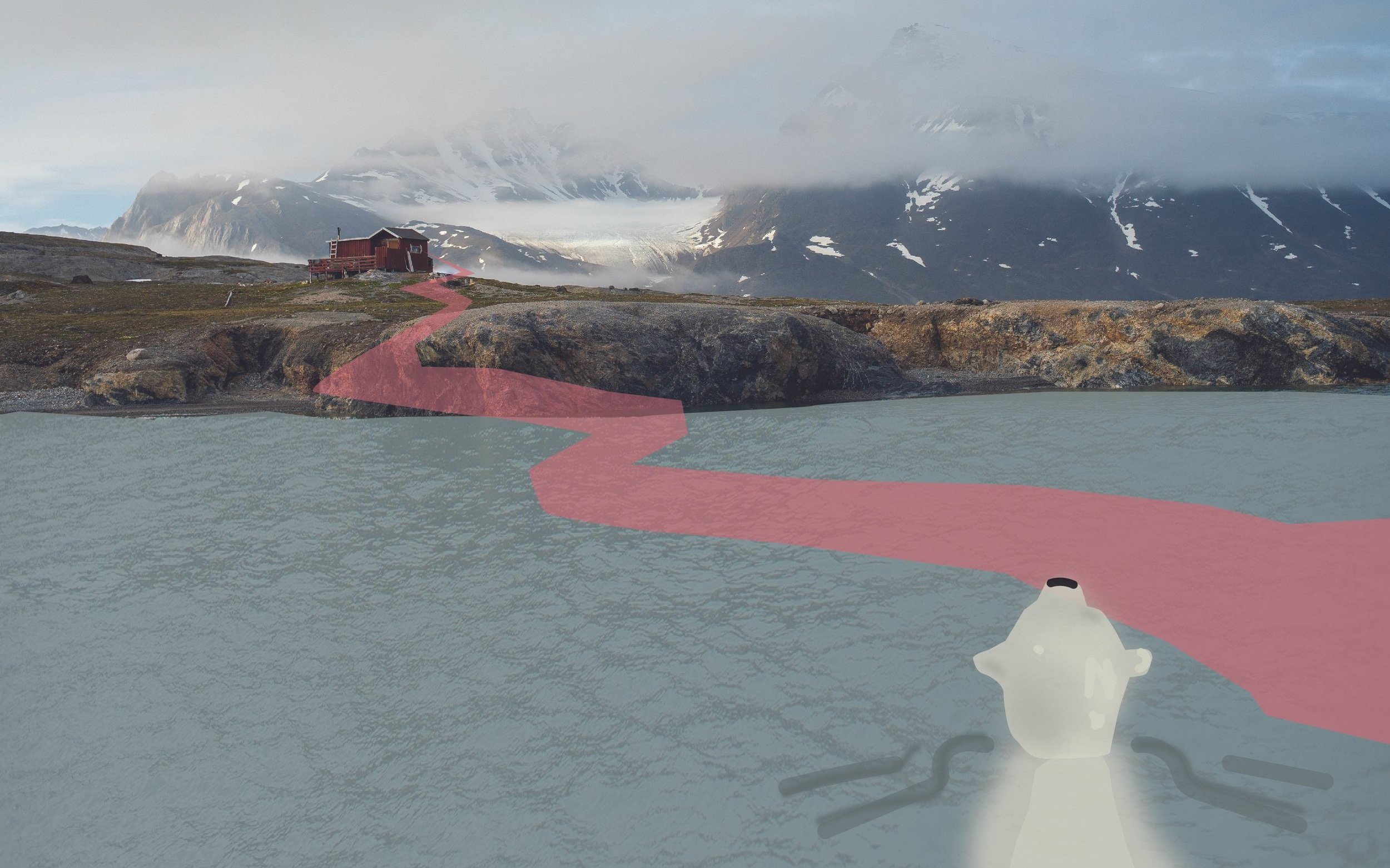
Will you work or travel in polar bear territory?
Explore ways to stay
respectful and safe
alongside polar bears
Supported by:
Learn where do polar bears travel and why.
Practice how to avoid an encounter and what to do if you meet a polar bear.
Stay safe in town.
Out on a trip
Review best practices for a safe trip or fieldwork.
Access regionally available safety tools.
Resources
Browse latest available science and resources.
Polar bears are:
adapted to hunt seals on the sea ice - whenever possible, bears spend their time out on the sea ice.
Marine mammals
yet they are very agile - polar bear will outrun a human very easily!
The largest land carnivores
can be found swimming far away from the shore, moving between the islands across great distances.
Excellent swimmers and divers
but polar bears will eat any food to survive in a harsh environment.
Dependent on sea-ice associated seals
The best way to live safely with bears is to avoid contact with them.
How to avoid an encounter
Educate yourself. Go through training provided by your station and read information on polar bear activity in the Kings Bay service building.
Before your trip, discuss possible plans of action for dealing with bears in different scenarios. Be sure everyone understands what to do and their role.
Travel in daylight and avoid areas of restricted visibility. Be especially cautious in areas along the coast and where polar bears may be hidden from sight.
Be alert and aware of your surroundings. Regularly scan the surroundings or appoint someone to be on watch. Be vigilant. Watch for signs of bear activity such as tracks, droppings, and carcasses.
Travel in groups and stay together to increase your safety. The larger the group, the greater the chances of deterring a bear.
Rest in open areas with a good view of the surrounding terrain.
Assign a bear guard. Additionally, take any opportunity to look for bears. Safety is everyone’s responsibility.
Store your food sealed and pack out all wastes.
Keep in mind:
When ashore, polar bears hunt and scavenge along coastlines, beaches, islands.
Polar bears frequently pass Ny-Ålesund along the coastline and between Ny-Ålesund and Zeppelin mountain (Gruvebadet)
Polar bears can be active at any time (often active in the evenings, during the night and early in the morning)
Stay safe in town
Be vigilant and aware of your surroundings at all times.
Be extra cautious along the coast, early in the morning and late in the evening.
Be especially careful in areas where bears can be hidden from sight.
Always carry polar bear deterrence tools.
Never leave town without polar bear deterrence and communication tools.
Even if you take precautions, you can still encounter a polar bear.
Ready your deterrent.
Stay calm. Do not run.
Assess the situation (What is the bear doing?)
If you meet a polar bear:
If a bear doesn’t know you are there or seems unconcerned:
Keep the bear in sight and quietly retreat to a safe place
Immediately notify Kings Bay watchman
Inform any people in your surroundings to avoid any potential encounters
Stay away from the area until watchman says it is safe to return
If a bear has been surprised at close range or shows signs of being agitated or threatened (huffing, stamping its feet, staring directly at a person, lowering it’s head with ears laid back):
Ready your deterrent.
Stay calm. DO NOT RUN.
Talk loudly with a firm, low voice. Do not huff, hiss or make sudden movements
Back away slowly and towards a safe place (building, vehicle, etc.)
Be prepared to use any possible deterrence (shovels, ski poles, rocks, blocks of ice, water in a thermos, etc.) and to use your physical size with your voice to push the bear away or fight back.
If a bear charges:
Use any possible deterrent.
Stand your ground. Do not turn your back. If in a group, stay together.
Yell and use aggressive body language to deter the bear (Which will also alert others of your situation).
Prepare to fight back.
Using anything within reach (stick, rocks, gear), focus your attack on its nose and eyes.
Safety Tools
Polar bear safety tools available for use in Ny-Ålesund, Svalbard.
Hand-held flare
Short-range deterrent, easy to carry and access, useful for surprise encounters, good for in-town use. Bright, red flame.
Available for free as rental in Kings Bay reception. Alternatively, available for purchase in marine safety stores or outdoor IGP store in Longyearbyen.
Long-range flare pistol
Long-range deterrent, requires loading. Use outside of town only.
Available for rental at Kings Bay reception. Training required.
Rifle
Lethal, long-range firearm. To be used only in critical situations where no other means are available.
Available for rental at Kings Bay reception. Training required.













